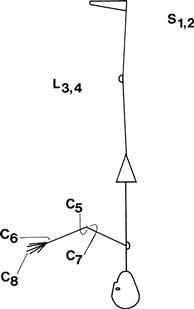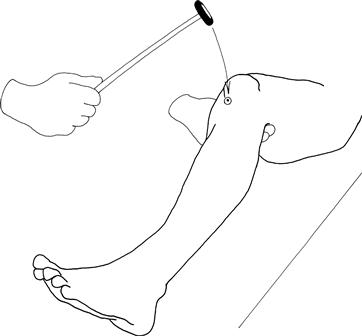Motor System
Reflexes
BACKGROUND
A tendon reflex results from the stimulation of a stretch-sensitive afferent from a neuromuscular spindle which, via a single synapse, stimulates a motor nerve, leading to a muscle contraction. Tendon reflexes are increased in upper motor neurone lesions and decreased in lower motor neurone lesions and muscle abnormalities.
The root values for the reflexes can be recalled by counting from the ankle upwards (Fig. 19.1).
Reflexes can be graded:
WHAT TO DO
Use the whole length of the patella hammer; let the hammer swing. Ensure the patient is relaxed. Avoid telling the patient to relax, as this is guaranteed to produce tension.
Biceps
Place the patient’s hands on his abdomen. Place your index finger on the biceps tendon; swing the hammer on to your finger while watching the biceps muscle (Fig. 19.2).
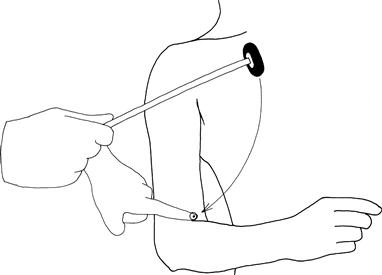
Figure 19.2 Testing the biceps reflex
Supinator
(N.B. Bad name for this reflex; the muscle involved is brachioradialis.)
Place the arm flexed on to the abdomen, place the finger on the radial tuberosity, hit the finger with the hammer and watch the brachioradialis (Fig. 19.3).
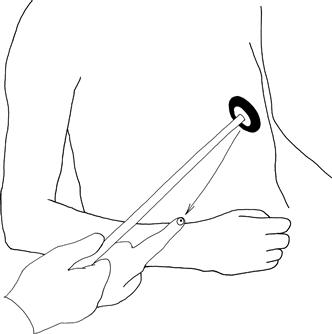
Figure 19.3 Testing the supinator reflex
Triceps
Draw the arm across the chest, holding the wrist with the elbow at 90 degrees. Strike the triceps tendon directly with the patella hammer; watch the muscle (Fig. 19.4).
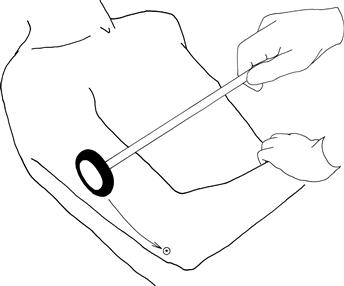
Figure 19.4 Testing the triceps reflex
Finger reflex
Hold the hand in the neutral position, place your hand opposite the fingers and strike the back of your fingers.
Knee reflex
Place the arm under the knee so that the knee is at 90 degrees. Strike the knee below the patella; watch the quadriceps (Fig. 19.5).

